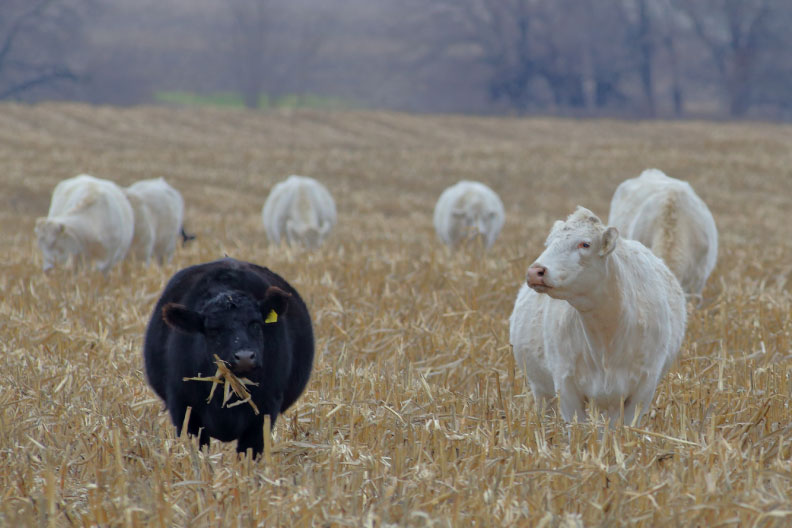By Tom Bowman
Beef Specialist,
Grand Valley Fortifiers
Growing cover crops has become more common place as crop farmers have realized the agronomic and environmental benefits of implementing them. Some cover crops that can be grazed include mixes of oats, peas, rye, radishes, turnips, beets, clover, buckwheat, and sorghum. The cover crops that have many different agronomic benefits include peas and clover which fix nitrogen into the soil, radishes, beets, and turnips which can help soil structure, and rye and buckwheat which can help to suppress weeds. Many producers have realized the benefit of grazing cattle on cover crops. Cattle can reduce the amount of residue left and cycle the plant nutrients into a more available form benefiting the following cash crop, as well as graze many weed species. Being able to put cattle onto a cover crop can help to provide late season grazing as well as providing producers the opportunity to give their pastures a rest while the cows are on the cover crop.
There are specific considerations producers should consider when grazing cover crops. First, make sure that producers aren’t becoming too reliant on cover crops as a feed source as there will be less feed in dry years or when there isn’t a good cover crop catch. Second, select the cover crop species to ensure they will not be a host for pests to subsequent cash crops. The last consideration is to make sure the cover crop species are not going to be toxic to cattle; such as species which are prone to producing high levels of nitrates during drought or frost stress.
In recent years producers have had success putting cattle out onto cornstalks after a corn crop has been harvested. The cattle can eat what is left behind by the combine – the extra corn cobs and grain is a great energy source and cleans up the field in preparation for the next season or if in a rotation the next crop. As a rule of thumb, producers should expect to graze cows at a rate of one acre/cow/month depending on corn grain yield. Producers should make some considerations about this, the first being that they will need to supplement cows with a protein source such as dry hay, distillers grains or canola meal. Another thing to consider is the amount of grain corn which is still in the field. If there is too much, then this can lead to acidosis and grain overload problems. The last consideration is the weather. Ontario can be unpredictable so make sure that cows are not damaging soil structure if it is too wet or if in the winter months, that there isn’t too much snow as cows can only graze corn stalks up to 3-4 inches of snow.
Both alternative grazing methods are great opportunities for producers, however their crop fields may not be adequately setup for grazing cattle so producers need to plan how they will maintain adequate perimeter fencing and how they will provide water.
In conclusion, these alternative grazing methods have a list of benefits for both the cattle producer and cash cropper. Cattle producers can enjoy an opportunity to increase their available low-cost feed sources and cash croppers have the benefit of increasing soil health and biodiversity.
This article was written for the Fall 2022 Beef Grist. To read the whole Beef Grist, click the button below.

